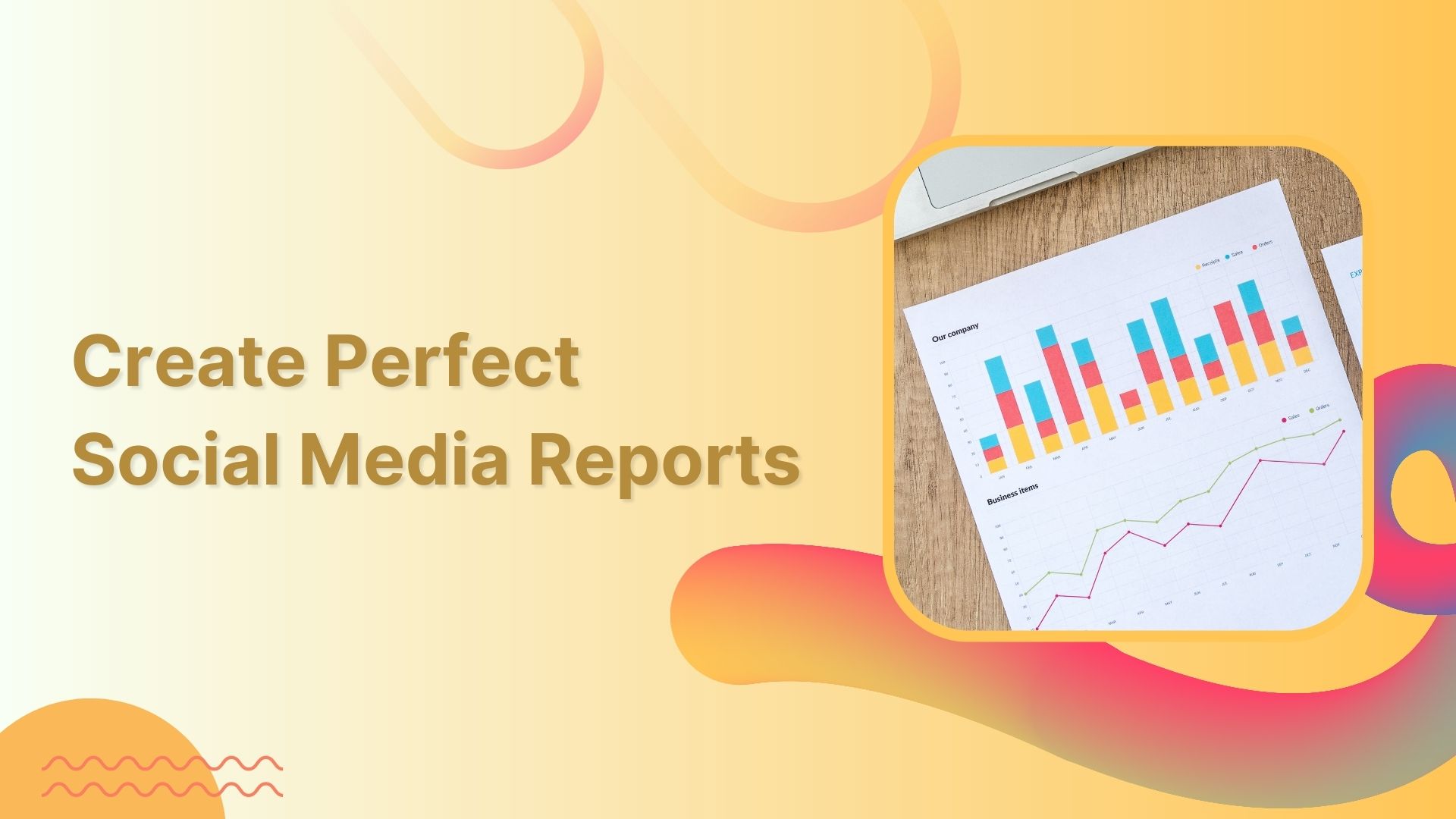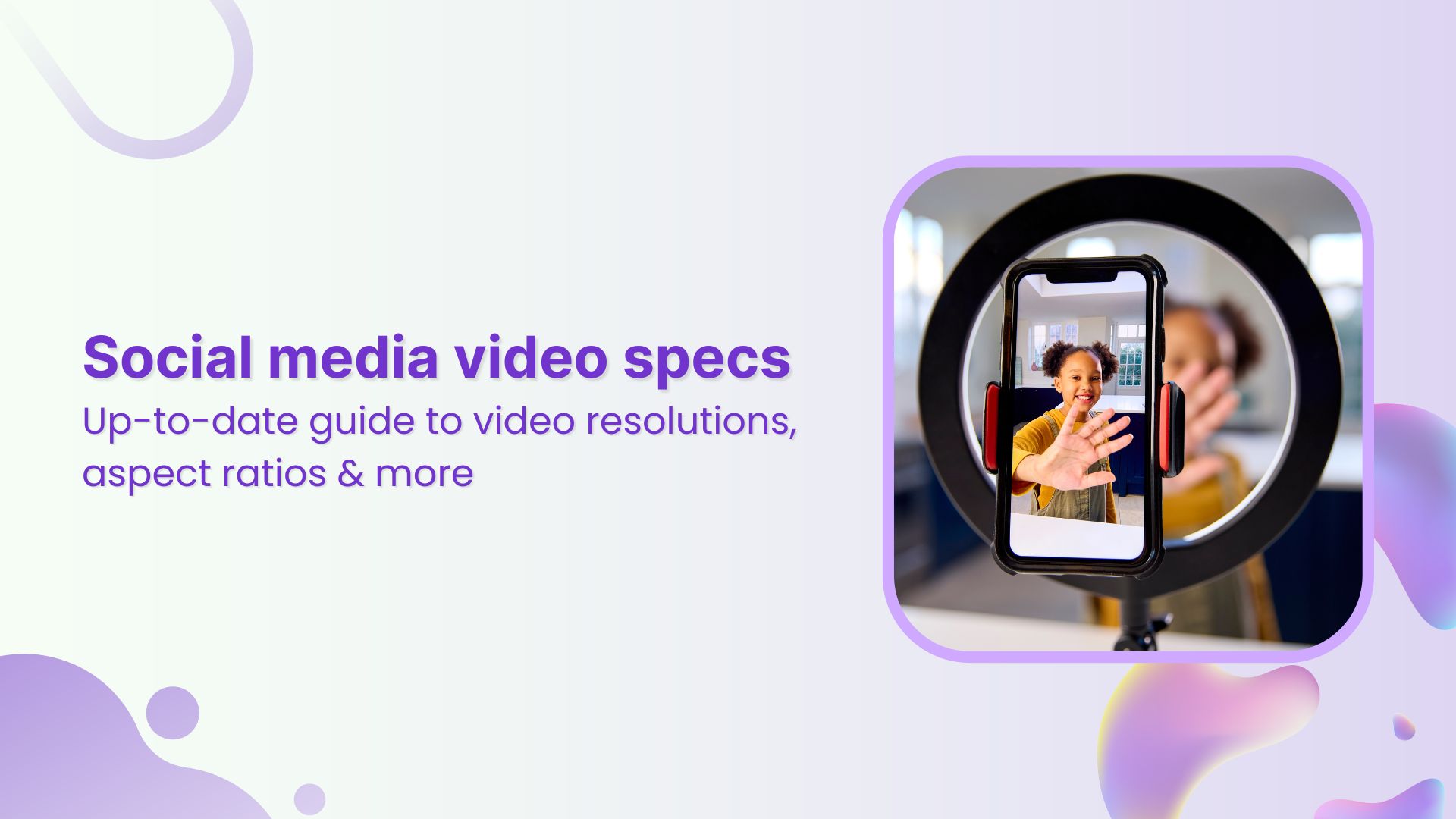Social media has gone mainstream in the last few years. Not only did it create more opportunities, but it also challenged the old-school marketing workflows. Whether this is social media reports or content calendars, something new pops up that becomes a norm within no time.
Perhaps, there were no social media managers 10 to 15 years ago, but now a social media expert could have a managerial role in an organization. It won’t be wrong to say that social media is an ever-changing phenomenon, and the only way to keep up is to adapt accordingly.
In this article, I’ll shed some light on the importance of social media reporting and how you can create for your business. But before going all in, let me quickly explain what it really is.
What is a social media report?
A social media report is social media analytics data compiled in a report form to showcase it to the client or higher management. Most of the time, such social media reports contain social media insights gathered across all active social media channels.
These insights are presented through graphs, pie charts, and tables – everything that helps send the message across. The purpose of social media reporting is to analyze the tactical approach regarding social media and figure out what could be improved going forward.
Usually, social media agencies prepare such reports for their clients to brief them on the impact of their strategies on their client’s social media performance. A social media report is mostly generated quarterly or annually to zoom in on the social media marketing strategies, content marketing plans, and content distribution approach.
It won’t be unfair to say that social media reports help clients determine what’s working for them on social media or what hasn’t clicked that much.
What should be included in a social media report?
A social media report contains the social media analytics data to report that influenced certain digital marketing strategies built afterward. However, most beginners in the social media marketing industry would scratch their heads when they are asked to create a social media report for the first time.
The trickiest part would be figuring out what to include in the report. If you’re going through the same trouble, then don’t worry about it. We’ve got this covered for you. Here are the social media metrics to include in your social media report:
Gain or loss in the total number of followers
Since a social media report is made for a certain period, it becomes helpful to determine how the social media team performed during the specific duration. The number of followers is a powerful social media metric that brands and organizations closely monitor, especially when they set a budget for their social media management.
Therefore, it becomes an essential part of the social media report that has to be presented to the higher management or the client. Social media agencies often put the total number of new followers gained during their campaign at the top of the report to make an impact.
Total posts published on each platform
Besides the total number of new followers gained during the campaign, the total number of posts is also important to report in social media reporting. The reason is that it’s vital to portray the total number of published posts to depict the work you have put into it.
Social media agencies always share how many social media posts they published every week or month. So without a doubt, the total number of posts should be included in a social media report.
Total impressions on the content
One of the essential social media metrics to comprehend social media performance is to find out how many impressions the content has gotten over a certain period. Social media agencies try to put out great social media content on behalf of their clients and they always report the total impressions the content received during their campaign.
Moreover, social media agencies also report the comparison between the total impressions on clients’ social media accounts during their campaign and the previous duration to give a clear picture of their work. So total impressions on the content are yet another important social media metric to be included in such reporting.
Engagement rate of social media posts
The engagement rate is the percentage of engaging posts. It tells the client how many published posts got a response from the audience. It could easily be calculated by dividing the total number of engaged posts by the total number of published posts and then multiplying the solution by 100. You’ll get the engagement rate of your social media campaign so to speak.
Overall followers’ demographics
The more you know about your social media followers, the better. Social media managers and experts are always keen to get to know their audience better.
Followers’ demographics are usually reported in a social media performance report, especially when a new follower influx is recorded as a result of the campaign.
Demographics such as gender, age, location, and similar information come in handy when presented in a social media report. So don’t sleep on the followers’ demographics when creating a social media report for your client.
Paid vs. organic social engagements
A key social media metric is the ratio of paid versus organic social media engagement. It’s always better to get engagement organically on evergreen content. It gives a sense of understanding that social media content is worth it.
However, clients won’t mind getting social media engagement through paid advertising as long as the traffic is converting into paying customers. The point is that every bit of social media management from the hired agency or social media expert goes into the social media report.
Top-performing social media platforms
It may not be added to every social media report template you would come across, but it’s vital to tell the client which is their top-performing social media platform.
The reason is that the client could always double down on that social media platform or get back to you for similar results in the future. So these were a few important social media metrics that should be included in a social media report.
How to create a social media report: A step-by-step guide
We’ve already discussed what needs to be included in our social media report. Now let’s head over to the step-by-step guide to creating the social media report:
I. Choose a social media reporting template
The process begins with opting for a social media reporting template. You can create your own or find a free social media reporting template online. Most social media agencies create their own social media reporting templates. It’s up to you whether you go for creating one or choose a free one available online.
A social media report could be in excel or PDF format, but there are no hard and fast rules as far as the file type goes. You could find a ton of free and paid social media reporting templates on Canva. Below is social media report template generated from ContentStudio:
II. Understand the client’s social media KPIs
KPI refers to the key performance indicator. Before start inputting data into the social media report template, it’ll be better to do some due diligence on the key performance indicators.
Simply put, understand what your client wants to know or see in the report. Stick to the most relevant information the client asked for or expects to see in the report.
The common social media KPIs are:
- Number of followers
- Total impressions
- Followers growth
- Posts reach
- Reshares
- Comments
- Likes
Furthermore, it doesn’t mean every client wants the same thing. So don’t be surprised if two clients want different results, for instance, client A might want to grow Instagram followers and client B wants to sell the products on Instagram.
Therefore, understand your client’s social media KPI to come up with a suitable social media report.
III. Opt for social media metrics to track
It’s essential to choose the social media metrics to track and report. No doubt, a social media report without analytics would be half-cooked. You might not want to miss out on the key social media metrics that explain how good or bad the campaign went. Insights provide a clear picture of the effectiveness of the strategies.
Make sure that you know what a client wants from you, for instance, if a client wants to grow its Instagram followers, then keep the following points in mind:
- Client’s objective with the social media strategy
- Target audience to reach out to from the client’s perspective
- Content format that is getting the most attention, such as photos, videos, or live streams
- Type of content that is doing well, for instance, Q&As in the live stream, Insta Reel videos, photo or video posts, or BTS in the Insta stories.
These things will only make the job easier for you.
IV. Highlight the client’s competitive edge
A competitive edge is what makes you stand out from the crowd. When something works on social media, the rule of thumb is to double down on that part to squeeze it further.
It could be anything, for example:
- Targeting a new audience segment
- Choosing an additional content format
- Hopping on a new social platform
- Bringing a new tool into the arsenal
- Experimenting with a new content cluster
As far as social media reporting goes, don’t sleep on highlighting the areas where your content plan has worked tremendously well. Most digital marketers and social media agencies put this part on the top to spice things up.
V. Pinpoint the lacking areas
Don’t shy away from embracing the failures. Wins and failures go hand in hand in social media marketing unless you come across a perfect social media content recipe.
The reason why you should mention the weak areas in your social media report is that the client deserves to know where they should be focusing more or what requires some serious thought.
VI. Mention your key observations and recommendations
The last but not least, summarize the report with your key observations about the social media marketing campaign. Plus, adding future recommendations for clients’ social media marketing would go a long way.
Enlighten your client with all the necessary information in the report. Share what has worked and what hasn’t clicked much, so that the client knows how to proceed in the future. Not only would it help your client, but it’d also put you in the client’s good books.
So these were six essential steps for creating a social media report for a client.
Tips for creating industry-leading social media reports
Are you ready to rejuvenate your social media strategy with the infusion of social media reporting? It may shake things up for the better.
Here are tips for creating industry-leading social media reports:
Include multiple insights
Adding as many insights as possible makes the social media report more authentic. The reason being it portrays the work and effort you have put into it. When a team runs a social media marketing campaign, it comes across a whole heap of data through social media analytics.
Sometimes, the social media platform’s insights don’t provide much information. Therefore, digital marketers and social media managers rely on third-party solutions for in-depth insights.
ContentStudio is my go-to social management tool. One of the features of ContentStudio is the social media analytics that gives me insights into my social media content performance. So always try to add multiple insights and analytical elements to your social media marketing report.
Do some due diligence on the collected data
It would be unfair to include every part of the social media analytics in the report. Therefore, it’s essential to do some due diligence to figure out what needs to be included in the report. Relevancy is always a major key in digital marketing even when you’re reporting to your client.
Plus, one of the perks of studying social data analysis would be the clarity of the client’s brand persona. Going through the social media analytics would help you understand what followers are liking and what didn’t work on a specific social platform.
Create a beautiful presentation
One of the essentials of creating social media reports is to design them well. Ask your graphic designer or hire a freelance designer if graphics designing isn’t your cup of tea.
Come up with well-crafted, beautifully designed social media reports. It shouldn’t the hardest thing to do because you could create a few templates once and use them forever.
It doesn’t matter whether you’re sending a monthly social media report or it’s a one-off social media report at the end of the campaign, try designing aesthetically beautiful reports.
Present in more than one format (if possible)
Report presentation is as important as the data inside it because if something looks pretty, it gets easier for the consumer to dig deeper into it. Crafting social media reports in multiple formats, such as PDF, xls, and JPG could make it easier for the client to access them.
It’s not vital to present your social media performance report in various formats, but it goes a long way.
Use an online graphics designing tool
Most small businesses and entrepreneurs don’t have an in-house graphics designer to work with. So an online graphics designing tool like Canva or Crello comes in handy.
The best thing about such online graphics designing tools is that they have ready-made social media report templates to use. Not only would it make the job easier, but it would also help agencies create appealing social media reports.
Showcase the campaign performance
The most important part of the social media reporting process is the campaign data. It’s because the data showcases the campaign performance. You have to be spot on with presenting the data because if you mess this up, then the report creation process won’t be worth it.
A rookie mistake when showcasing the campaign performance could be emphasizing the text instead of diagrams such as pie, bars, columns, lines, doughnuts, and other charts.
Let’s conclude
Social media is a multi-dimensional industry with so many opportunities and possibilities. Where it opens new doors for SAAS investors and entrepreneurs, it also creates opportunities for marketers to try out new marketing tactics.
Social media reporting is an integral part of the social media marketing process. No wonder it provides opportunities for graphic designers as well as social media experts to join forces. Anyway, finding the best and most free social media report template is great, but using it with perfection is what matters the most.
This article explained what a social media report is and what needs to be included in it. Plus, it also shed some light on the importance of a social media report and how social media agencies can create one for their clients.



Analyze, Understand, and Improve Your Social Strategy
Stack your key social metrics against those of your competitors and make targeted steps towards social media success.
14 days free trial - no credit card requiredHassaan Khan
Hassaan Khan is a freelance writer for SAAS companies, e-commerce stores, and niche websites. He has contributed to SEMrush, ThriveGlobal, BloggingCage, AllBloggingTips, and several other publications. He builds niche websites, publishes e-books, and helps website investors with his done-for-you niche site-building service.






